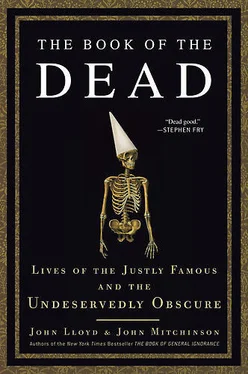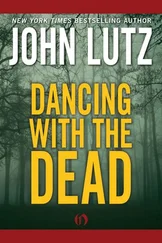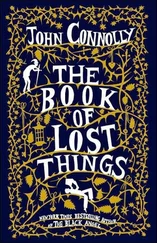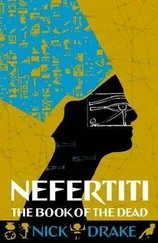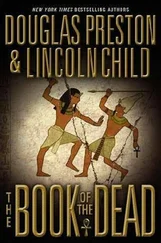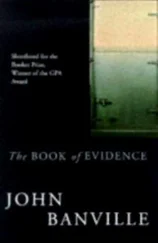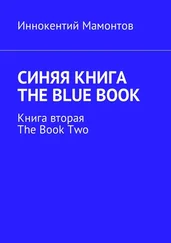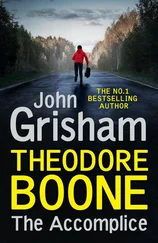Meanwhile, Betty and L. Ron Hubbard talked Parsons into setting up a joint venture, Allied Enterprises, into which all three would pool their earnings. Parsons had already sunk most of his money into the lodge but put what was left—about $12,000—into the new company. Hubbard invested $1,200 and promptly disappeared with Betty to Miami, where he used all the Allied Enterprises capital to buy a pair of yachts. Jack, with nothing in his bank account, had to take a job at a gas station to pay for food. When he eventually tracked the couple down in Florida, they swiftly absconded on one of the boats. Furious, Parsons summoned up a storm (or so he claimed) at sea that forced them to return to port.
Jack sued Hubbard but got only part of his money back. He returned to Pasadena, resigned from the OTO, and broke with Crowley. Crowley was indifferent. He had regarded Parsons and Hubbard’s Babalon ritual as ridiculous and wrote to a friend despairing of the “idiocy of these goats.” Parsons seemed equally disillusioned:
Now it came to pass even as BABALON told me, for after receiving Her Book I fell away from Magick, and put away Her Book and all pertaining thereto. And I was stripped of my fortune (the sum of about $50,000) and my house, and all I Possessed. Then for a period of two years I worked in the world, recouping my fortune somewhat. But that was also taken from me, and my reputation, and my good name in my worldly work, that was in science.
The last sentence refers to his investigation by the FBI when he was under suspicion, not only for occult activities but also for associating with known communist sympathizers. This cost him his government clearance, which meant he could no longer work on official rocket projects. Financially ruined and pushed to the edge, he contemplated suicide, but then, with Candida’s support, he decided he was ready to go beyond even Crowley. He took the Oath of the Abyss and declared himself the Antichrist.
This sounds ludicrously overdramatic, but Parsons’s idea of the Apocalypse was different from the one in the Bible. In fact, it reads more like a vision of the countercultural movements that would sweep America in the 1960s.
An end to the pretense and lying hypocrisy of Christianity. An end to the servile virtues, and superstitious restrictions. An end to the slave morality. An end to prudery and shame, to guilt and sin, for these are of the only evil under the sun, that is fear. An end to all authority that is not based on courage and manhood, to the authority of lying priests, conniving judges, blackmailing police, and an end to the servile flattery and cajolery of mods, the coronations of mediocrities, the ascension of dolts.
Jack Parsons, “the James Dean of the Occult,” never got to see his satanic Utopia. By early 1952 he had begun to manufacture bootleg explosives at home. He and Candida planned to move down to Mexico to create one that was “more powerful than anything yet invented.” Before they left, on June 17, 1952, Parsons, sweaty-palmed as ever, accidentally dropped a vial of the extremely volatile compound known as fulminate of mercury. The explosion blew off his entire right forearm, broke his other arm and both legs, and ripped a hole in his jaw. It was heard more than a mile away. Parsons died an hour later, protesting: “I wasn’t done.” Shortly after hearing the news, his mother committed suicide.
Marjorie “Candida” Cameron went on to become a successful painter and actress in avant-garde films. She is sometimes cited as the inspiration behind the Eagles song “Hotel California.” In recognition of his work on the space program, Parsons had a crater named after him on the moon—on the dark side, naturally.

In 1946 Parsons, a great believer in UFOs, claimed to have met a Venusian in the Mohave Desert. Venusians were very much in fashion at the time and it was only a couple of years since the death of the Serbian engineer Nikola Tesla(1856–1943), who some believed had been sent from Venus to modernize earthly technology. Tesla was one of the great innovators of the modern age, often so far ahead of his time that he might as well have been from another planet. Honored as “the man who invented the twentieth century” and nicknamed “the patron saint of electricity” for developing the alternating current system that underpins all today’s electrical networks, he held more than seven hundred patents in his lifetime, for innovations in electromagnetics, robotics, remote control, radar, ballistics, and nuclear physics. He invented the Tesla coil, which gave us radio, X-ray tubes, and fluorescent light. Some of his ideas were so advanced that science has still not caught up with them, and his almost extraterrestrial gifts as a scientist were matched by a strange and otherworldly personality. If John Dee and Jack Parsons fall into the category of madly brilliant eccentrics, Nikola Tesla is in a class of his own.
Were he born today he would be diagnosed as being on the autistic spectrum, with a severe case of obsessive-compulsive disorder. But those labels weren’t available in the mid-nineteenth century. Mental illness was put down to “nerves” or “hysteria,” and real oddities were either tolerated or committed to the asylum. Tesla’s peculiarities meant that the scientific community would never truly come to accept him, nor did he receive either the acclaim or the financial rewards his work should have commanded.
He was born into a Serbian family in Smiljan, then part of Austro-Hungary, now in Croatia: It was his proud boast to be both Serbian and Croatian. The fourth of five children, he recalled his early years as exceptionally happy, growing up in the country surrounded by farm animals. Later in life he would tell how it was witnessing the sparks generated by stroking the family cat that made him want to understand what electricity was. “Eighty years have gone by since,” he wrote, “and I still ask the same question, unable to answer it.” The Teslas were a clever family, blessed with exceptional memories, and Tesla’s father, Milutin, a Serbian Orthodox priest and poet, devised mental exercises to keep his children’s minds supple and alert. He had an impressive library of books but said it wouldn’t matter if he lost them because he had memorized the classics by heart. Tesla’s mother Duka was barely able to read but could recite thousands of verses of Serb sagas and long passages from the Bible. Her needlework was famously intricate—using only her fingers, Tesla claimed, she could tie three knots in an eyelash. She also improvised ingenious labor-saving devices, even constructing her own mechanical eggbeater. “I must trace to my mother’s influence,” Tesla wrote, “whatever inventiveness I possess.”
The great tragedy of Tesla’s youth was the death of his older brother, Dane, in a riding accident. Nikola was only five, but he had vivid nightmares about it for the rest of his childhood. A conscientious, sensitive boy, he felt his parents’ grief keenly, and no matter how hard he worked, he was conscious that he could never make up for the loss of his brilliant sibling. Dane and Nikola shared at least one outstanding talent: the ability to visualize things in precise, three-dimensional detail. Vivid images of memorable or traumatic events would return to Tesla at any time of night or day, often accompanied by flashes of light, and refuse to disappear. “Sometimes they would remain fixed in space even though I pushed my hand through them,” he recalled. Though distressing for a child, this pictorial clarity would be very useful to him as an inventor.
Young Nikola was hopelessly accident-prone and had several brushes with death. He fell headlong into a kettle of boiling milk, nearly drowned after swimming under a raft, was almost swept over a waterfall at one of the nearby dams, and suffered serious bouts of both malaria and cholera. These shocks provoked a general sense that the world was out to get him, and worsened the long list of obsessions he suffered from:
Читать дальше
